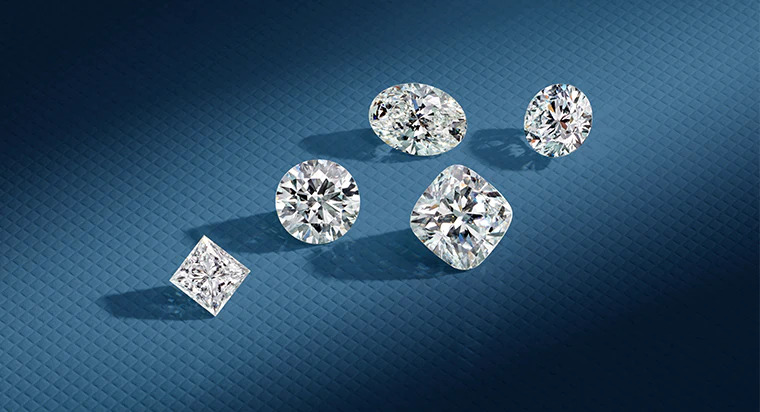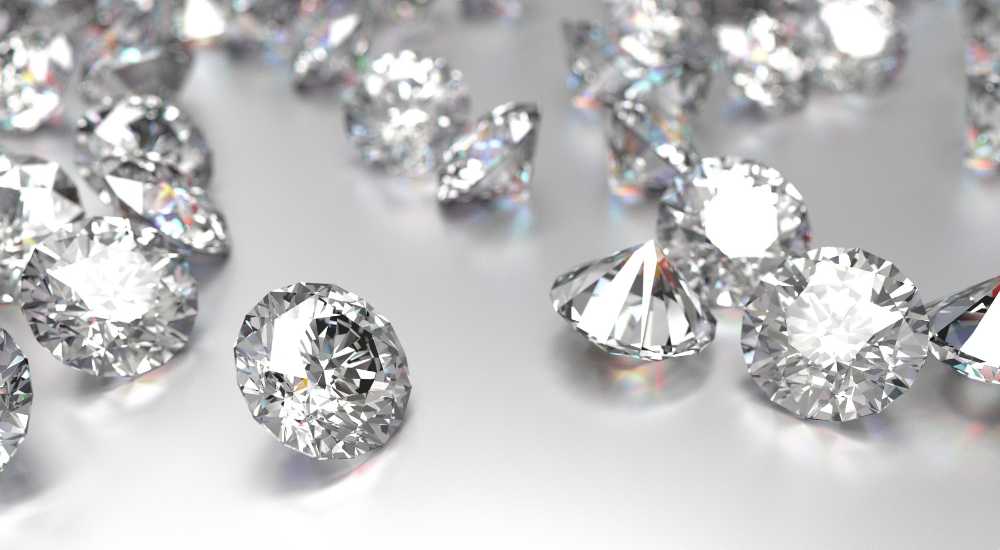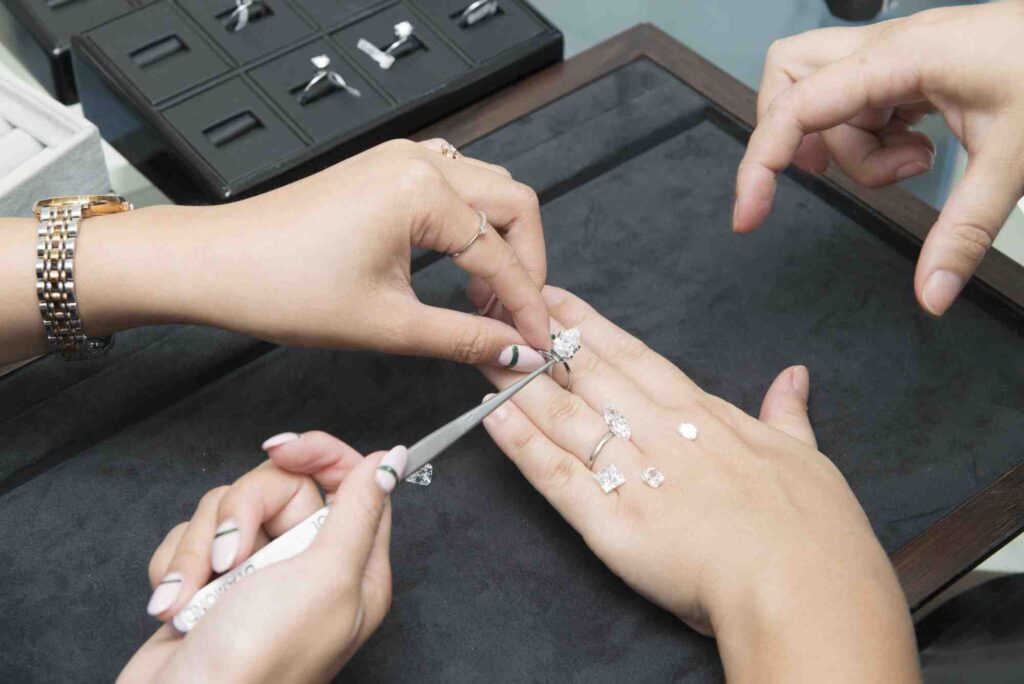When you are considering buying diamonds, one of the very first things that you will most likely consider exploring is the clarity of the diamond. In short, you want the diamond to look and feel majestic when you wear it and the clarity somehow manages to take care of it.
However, with so many individual aspects to consider, it makes sense that people are often confused about unfolding more details concerning the I1 clarity diamond and what it means. Are they eye-clean? Are they worth the price? The questions are extensive.
If you have been curious to unfold more details about I1 clarity diamonds and everything related to making the purchase, you have come to the right place.

What is the Importance of Clarity concerning Diamond Purchase?
When you are wondering about the details and specifics of purchasing a diamond, it makes sense for you to prioritize the 4Cs. These include the clarity, color, cut, and the carat weight of the diamond.
Among them, one element that does deserve a shoutout is the clarity, which determines how eye-clean your diamond is going to be. The Gemological Institute of America (GIA) established a universal diamond clarity scale, categorizing diamonds from Internally Flawless (FL) to Included (I).
If we follow that pattern, it is safe to assume that I1 falls at the bottom end of the spectrum, meaning that it encompasses the diamonds with the least amount of clarity in them. So, the question is, “Are they worth buying?”
What does I1 Clarity Signify?
The “I” in I1 stands for “Included to the First Degree.” This implies that inclusions are noticeable, but the GIA determines a hierarchy within the I category.
As we previously highlighted, GIA classified the “Included” category right in the bottom tier, which means that the diamonds classified under the I tier have the least amount of clarity in them, making them susceptible to having visible inclusions and blemishes.
However, taking aside the visible imperfections in this diamond, we can’t deny the fact that it is one of the best options for people who have a lower budget when it comes to buying diamond jewelry.
The standard “Included” category can further be classified into three sections:
- I1: Inclusions are visible under 10x magnification and often to the naked eye.
- I2: Inclusions are more prominent and can affect brilliance more significantly.
- I3: Inclusions are readily apparent, considerably affecting brilliance and potentially the diamond’s structural integrity.

One thing you have to keep in mind is that multiple factors influence the price of the diamonds besides just the clarity. So, having two I1 diamonds doesn’t mean they will be of the same price. Factors like carat weight, color, cut, etc. are a few additional factors that influence the price of the final piece of jewelry you are buying.
What are the Pros and Cons of Buying I1 Diamonds?
Now that you have a basic understanding of the I1 diamonds, it makes sense that you need a better understanding of the pros and cons too, so let us get that out of the way.
Pros of I1 Diamonds:
- Affordable – Since I1 diamonds aren’t eye-clean, you can rest assured that you won’t have to worry about spending an unnecessary amount of money to buy I1 diamonds. They are a lot cheaper and perfect for people on a stringent budget.
- Uniqueness – People indeed look for the eye-clean factor when buying diamonds. However, some individuals also like the uniqueness that the inclusions and blemishes showcase in an I1 diamond, making them enticing to look at. It adds a depth of individuality to the diamond.
- Customization – Since I1 diamonds are more affordable, buyers may have more budget flexibility to invest in custom settings or other features, allowing them to create a personalized piece of jewelry within their budget.
Cons of I1 Diamonds:
- Visible inclusions – Hands down one of the biggest issues that people experience with buying I1-included diamonds lies in the visible inclusions. Depending on the size of the diamond, there are chances that the inclusions could be a lot more potent.
- Impact on brilliance – When you have a diamond that’s filled with inclusions and blemishes, it is bound to affect its brilliance, reducing the sparkle in the diamond. While not all inclusions may have a significant impact, some may be more noticeable and detract from the stone’s overall visual appeal.
- Limited resale value – If you have plans of reselling the diamond in the future, there are high chances that you wouldn’t be able to seamlessly like the diamonds with higher clarity. So, that’s another factor you have to keep in mind when you are considering upgrading to a new diamond in the future.
What Mistakes to Avoid When Buying I1 Diamonds?
Buying I1 diamonds will not dig a hole in your pocket. However, you can’t deny the fact that there are quite a few different marketing tricks and gimmicks that people indulge in. That’s the reason why you need to focus on identifying factors that will prevent you from getting scammed by jewelers.

1. They tell its eye clean
When you are visiting a jeweler and they tell you that the I1 diamond you are considering buying is eye-clean, be assured that they are straight up lying to you. There’s a reason why GIA has categorized the I1 diamonds at the bottom of the clarity grade.
2. They showcase a clean clear pot
Another common issue that you might experience with buying I1 diamonds is being fooled by the clean clarity pot. If you find that the clarity pot isn’t showcasing any visible inclusions when it comes to I1 diamonds, it means that the jeweler is lying to you.
3. They mention noticeable inclusion makes it unique
To an extent, it is true. However, it is wrong to think that noticeable inclusion in a diamond doesn’t matter. That’s the most complicated thing that anyone would tell you, so that’s something you’d have to be mindful of. Believe it or not, an inclusion or a blemish will affect the quality and appearance of the diamond. So, that’s something that you have to come to terms with.
When buying I1 diamonds, you have to seek clarity and transparency in the purchase process. The last thing that you want is to complicate things and pay more for a diamond that’s worth less than that.
Is I1 Diamond Eye Clean?
As we have been highlighting from the beginning of the guide, I1 is probably the diamond with one of the least clarities. This automatically means that the diamond has visible inclusions and blemishes in them.

So, to answer your question, “Are I1 diamonds eye clean?” Technically, they aren’t. When you see them with your naked eye, you’ll be able to make out the visible inclusions and blemishes in them. It is usually the size of these imperfections that determines whether or not the diamond would be eye-clean, so that’s another factor that you have to keep in consideration.
However, it is still possible to find I1 diamonds that appear clean to the naked eye, especially if the inclusions are small, well-positioned, or masked by the diamond’s facets. So, it is about your luck as well.
What to Consider When Buying I1 Diamonds?
With all the significant information out of the way about I1 diamonds, the last thing to consider is the buying guide. What are some factors that you need to consider?

- Start with the cut quality
I1 is not the most eye-clean diamond. However, the key here is to find one with precision cut quality that will be able to conceal these imperfections so that the diamond looks more expensive and premium, even though you paid a lot less for it.
- Inspect the inclusions
If you are considering buying I1 diamonds, we’d recommend you buy them in person. For this, you should inspect the diamond with the naked eye and under magnification to see how visible and prominent the imperfections are. If placed in a certain way, it becomes easier to conceal these inclusions, so that’s something you’d have to prioritize.
- Consider the setting
The kind of setting you choose for your I1 diamonds also makes a huge difference. So, if you are considering sorting out your purchase, we’d also recommend you pay attention to the quality and design of the setting.
- Buy from reputable jewelers
There are multiple online and offline stores selling I1 diamonds. While it is easier to get scammed and pay more for half the quality, what you need to do is stay alert throughout the process. You don’t want to rush things through and instead take the time to inspect the diamond before buying.
- Personal preference
The last factor is for you to consider what kind of designs and settings you’d want for your I1 diamond. Focus on factors that matter most to you, whether it’s size, brilliance, or uniqueness, and select a diamond that meets your criteria. This should help you figure out what would be an ideal I1 purchase for you.
With so many individual elements when it comes to buying I1 diamonds, it makes sense that people are often confused about the ins and outs of how to buy the right quality of I1 diamonds for themselves.
Conclusion
If you are someone who has been confused about buying I1 diamonds and has been looking for ways to land the best quality ones, we hope this guide helps you figure out the basics. Investing in an I1 diamond can be a good option if you are looking for something affordable for regular wear.

